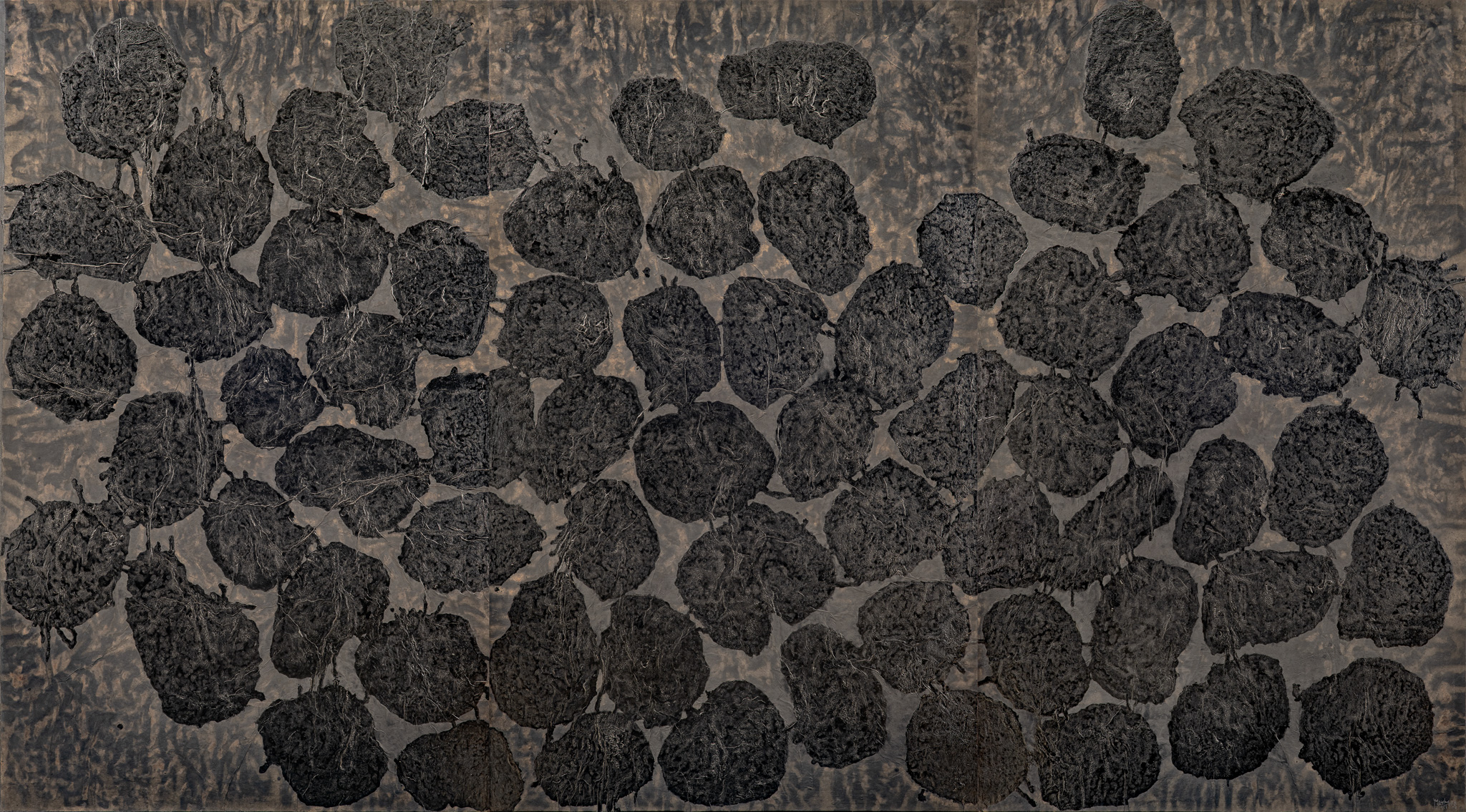Shows
Interspecies Subversion in “The Last Tree”


Yang Jiechang
The Last Tree
Alisan Fine Arts
Hong Kong
May 22–Aug 31
“If I learned how to speak French,” Yang Jiechang told ArtAsiaPacific in 2015, “I would lose myself.” At the time, the Guangdong-born artist had lived in Paris for nearly three decades, but throughout the years he held firm on preserving his Chinese heritage. Witnessing his traditional yet subversive ink works on silk and xuan paper, it is not difficult to understand why. As Yang was a child of the Cultural Revolution and a specialist in Asian philosophies (including Buddhism, Daoism, Confucianism, and Qigong), his interest in, and expansion of, his cultural background has been the lifeblood of his practice since the 1980s.
Yang’s latest solo exhibition at Alisan Fine Arts in Central presented selected works from his acclaimed series Soy Sauce Drawings (1988), and Hundred Layers of Ink (1989–99). Also on display was his more recent Tale of the 11th Day (2010–23), surreal landscapes which take inspiration from Giovanni Boccaccio’s The Decameron (c. 1353). And as Boccaccio’s collection of allegorical short stories traces surviving the Black Plague over the course of ten days, for this series Yang imagines the utopia of “the 11th day.” Immediately visible upon entering the gallery space, the centerpiece The Last Tree (2016–23) marked the exhibition’s namesake.


Rendered in Chinese ink and mineral color on a silk canvas, The Last Tree depicts dozens of animals climbing up and hidden in the branches of a leafless tree, while a cascade of elephants levitate above the scene. The environmental composition recalls Su Shi’s painting Wood and Rock (c. 1071), but as is typical in this series, Yang includes visions of radical post-speciesism that contrast with the painting’s traditional guo hua style: a nude woman and a cheetah-antelope-hybrid dance together below the tree; an ape mounts a hog with cow-like spots; a meerkat rides happily on an elephant’s back; a monkey tightly wraps its limbs around a jaguar in a suggestive embrace. Set against the painting’s variegated mahogany background, these opaquely colored characters are all the more accentuated.
The same themes are explored in White Eyes (2015), a simpler composition featuring copulating animals and a graphic depiction of bestiality. A hazy stone-blue background surrounds the subjects like a murky riverbed, offsetting the painting’s contentious portrayal of sexuality by emphasizing its naturality. His work Yellow Earth (2014–17) takes this concept to the extreme, as dozens of miniature scenes (also presenting animals and humans in various configurations of intimacy) populate a golden landscape. Here, the soft earth-toned background was inspired by the sketches of Song dynasty-era Emperor Huizong, but again daring depictions of inter-speciesism contemporize the painting.
Yang is able to adeptly capture the colors and textures of ancient ink works by invoking a traditional 三番九染 (san fan jiu ran) technique, in which he repetitively applies layers of natural color to the canvas. He learned the method at the Guangzhou Academy of Fine Arts, where he studied the Chinese calligraphy and ink masters who remain his primary inspirations. This education was perhaps most evident in Yang’s Hundred Layers of Ink series (1989–99), which abstracts traditional painted subjects through built-up coats of black ink on xuan paper and gauze, creating an unlikely three-dimensionality. At Alisan eight works from this series were exhibited, although these were produced in the 1990s, nearly a decade after Yang graduated from the Academy and first conceived of Hundred Layers.
Six of these paintings were from the artist’s 1996 Hundred Layers sub-series For Bada (referencing the Ming and Qing dynasty ink master Bada Shanren), which are less conceptual than other Hundred Layers works in that one can clearly make out the subjects’ silhouettes: For Bada 12 depicts a plum blossom, a fish dominates the composition in 14, and in 15 a bird positioned at the canvas’s bottom-left corner raises its beak toward the opposite side. In each painting, an excess of ink layers creates a glossy finish over the subjects, attracting highlights as one shifts their perspective. As such, despite Yang only using hues of black and gray, light and shadow serve as translators for his figuration.


While Hundred Layers evokes a surplus of material, the artist’s Soy Sauce Drawings (1988) were, as its name implies, created using the affordable condiment, demonstrating Yang’s lack of resources at the time. Exhibited in a separate room, these works were rendered on computer paper that Yang took from Heidelberg University’s East Asian Art Library, which were otherwise destined to become waste. All the exhibited works in this series (Soy Sauce Drawing 1 to 6) depict abstract shapes in gradient shades of brown, muddying the stationery paper’s small text. These shapes’ variations in tone make them appear like strips of tree bark, recalling the exhibition’s title and the natural structures which have long been an inspiration to Yang. It was only a shame that the series (which has not been shown before in Hong Kong) could be so easily missed at Alisan, as the adjacent room felt small and dim compared to the main gallery space.







